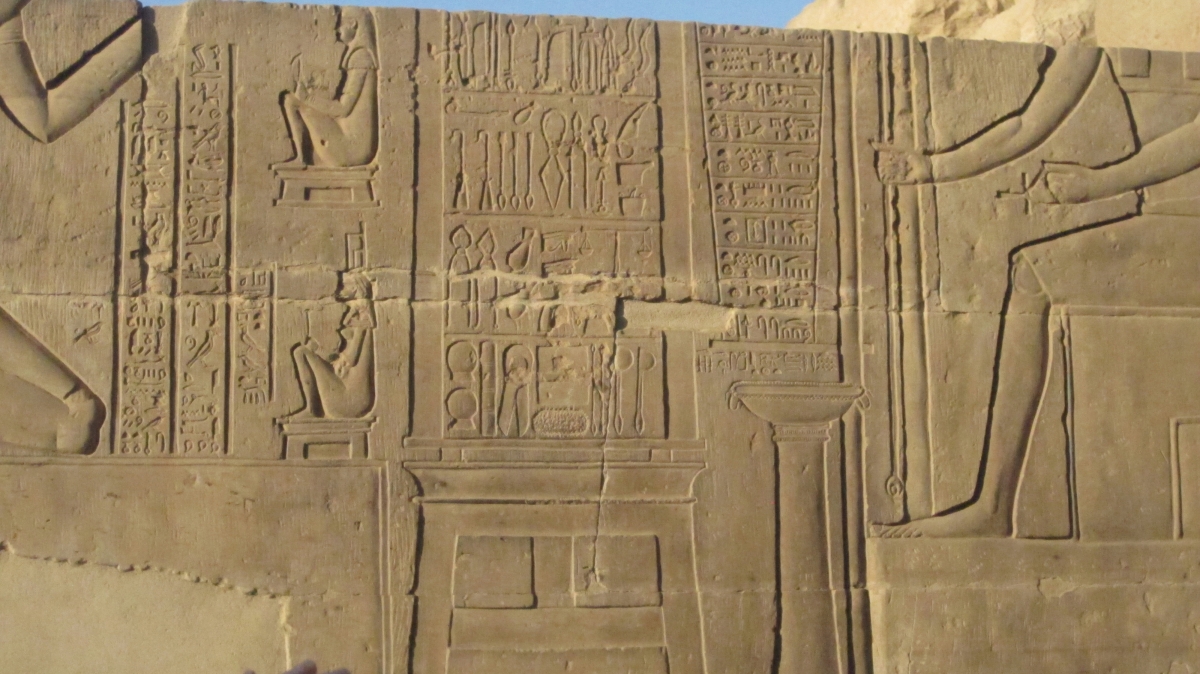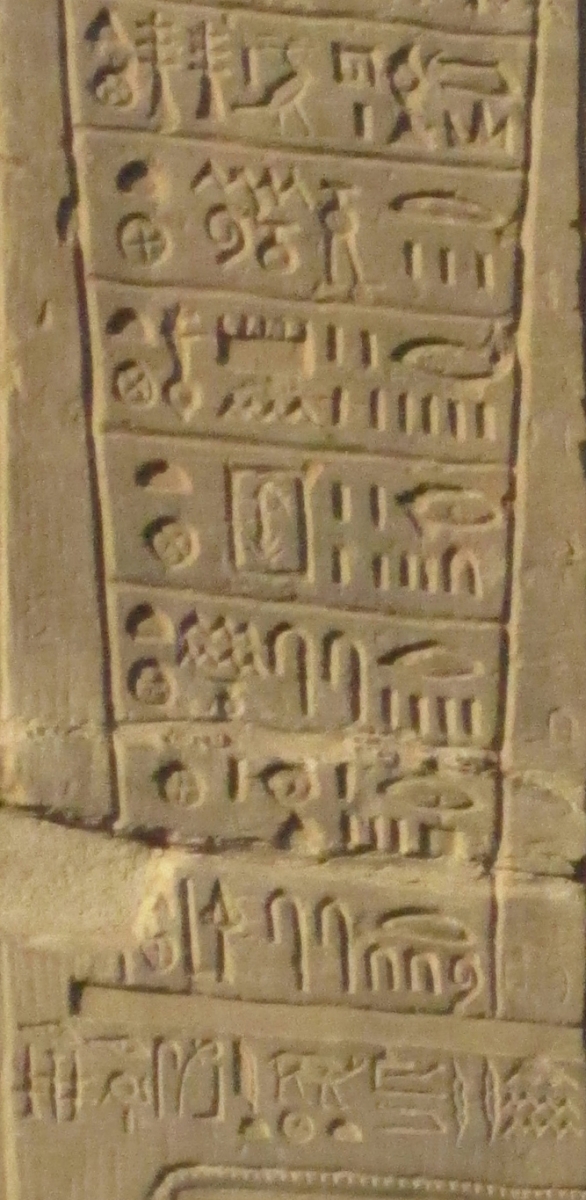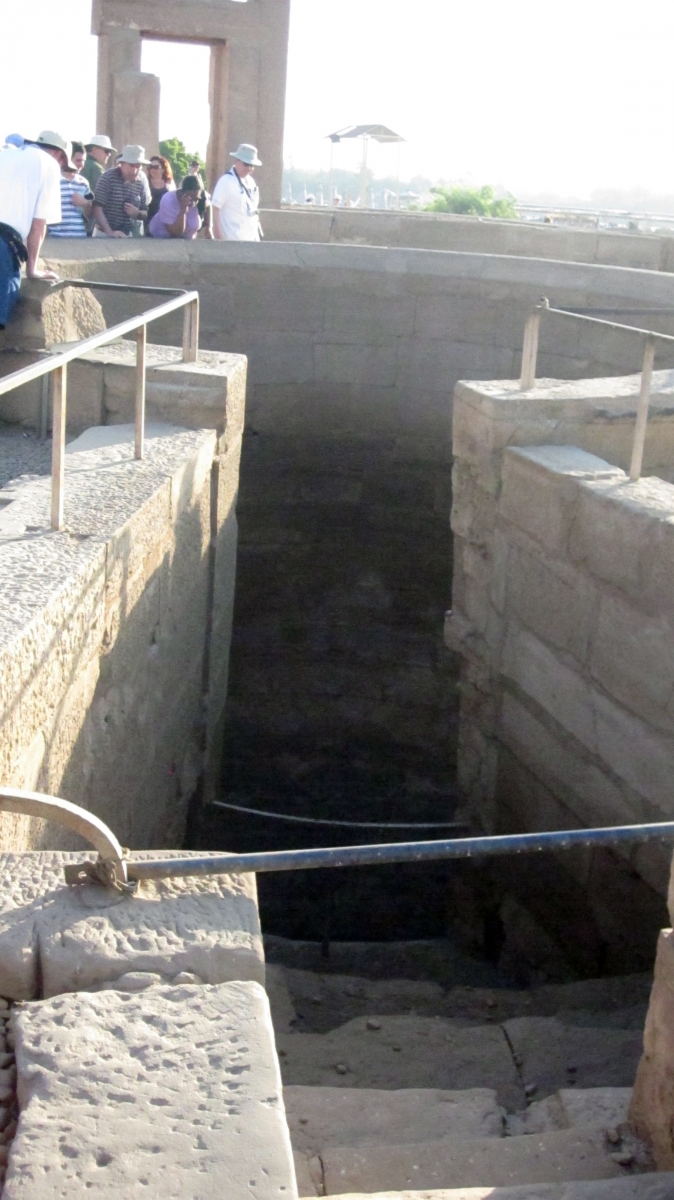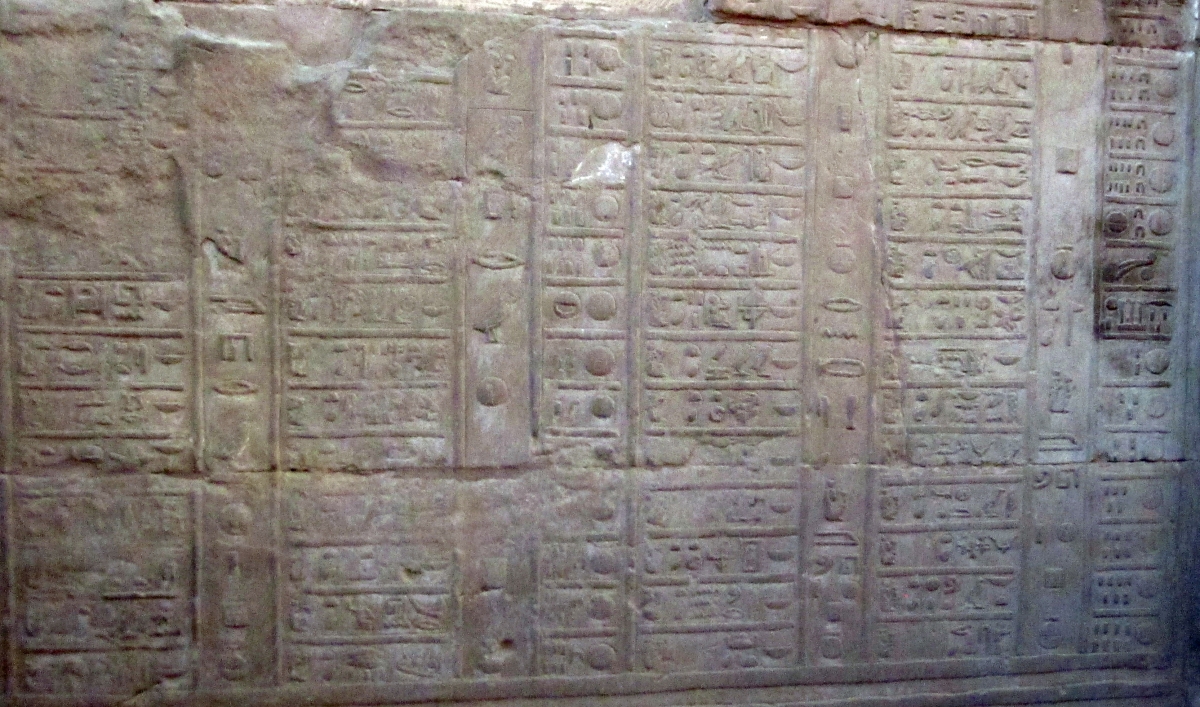An Ancient Egyptian Mathematical Photo Album: Samples of Numeral Hieroglyphs by Location – Kom Ombo Temple
The Kom Ombo Temple (180–47 BCE), located north of Aswan along the Nile River, is known for a scene depicting what may be medical instruments. However, of interest to mathematicians is another part of the scene that contains a list of city names and fractions.

Figure 19. Scene from a wall of the Kom Ombu Temple (180–47 BCE).
The middle section contains what appears to be medical instruments,
while the right side shows a list of city names and fractions.

Figure 20. A closer view of the scene in Figure 19 containing what are believed to be
medical instruments on the left and a list of city names and fractions in the middle of the photo.
This middle section is read from right to left, with each line containing a fraction followed by a city name.
The hieroglyph of a circle with an x in the middle, at the end of each line, is the determinative for town.
Zooming in on the list of fractions, one sees the special hieroglyph used for \(\frac{1}{2}\) in the first row of the photo. According to Coppens & Vymazalová [2010, p. 129], this list of fractions and cities has been placed in a vase above a basin and signifies a recipe for bringing restoration to Egypt.

Figure 21. Close-up of a scene from a wall of the Kom Ombu Temple (180–47 BCE) showing a list of city names and fractions.
Many of the temples in Egypt had nilometers, which the priests used to measure the height of the Nile inundation each year. Taxes were then determined based on the water level. If the floodwaters were high, taxes were higher, since it was expected that fields would receive a good amount of new topsoil, resulting in a plentiful harvest. If the floodwaters were low, then taxes would be correspondingly lower, since the harvest yields were expected to be lower. The photo below shows the nilometer at the Kom Ombo Temple.

Figure 22. Nilometer at the Kom Ombo Temple (180–47 BCE) in Egypt.
In the section on the Egyptian Calendar earlier in this article, Figure 11 was a photo from the Kom Ombo Temple. Figure 23, the last image in the Kom Ombo section of our photo album, is a wider view of the portion of the wall with the calendar, which shows dates (using hieroglyphic numerals) and the corresponding events at the temple for each date.

Figure 23. Calendar at the Kom Ombo Temple (180–47 BCE) in Egypt.
Continue to British Museum page.
Return to list of Locations.